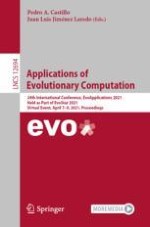2021 | OriginalPaper | Buchkapitel
WILDA: Wide Learning of Diverse Architectures for Classification of Large Datasets
verfasst von : Rui P. Cardoso, Emma Hart, David Burth Kurka, Jeremy Pitt
Erschienen in: Applications of Evolutionary Computation
Aktivieren Sie unsere intelligente Suche, um passende Fachinhalte oder Patente zu finden.
Wählen Sie Textabschnitte aus um mit Künstlicher Intelligenz passenden Patente zu finden. powered by
Markieren Sie Textabschnitte, um KI-gestützt weitere passende Inhalte zu finden. powered by
